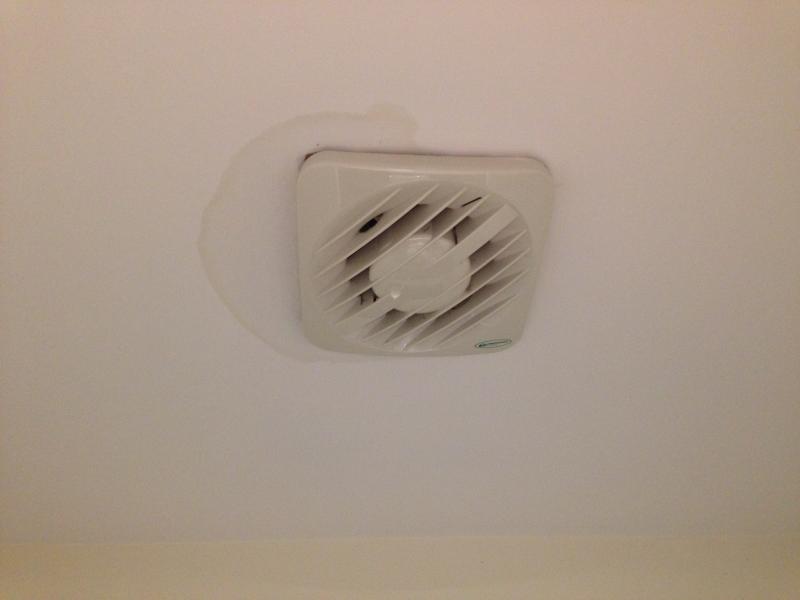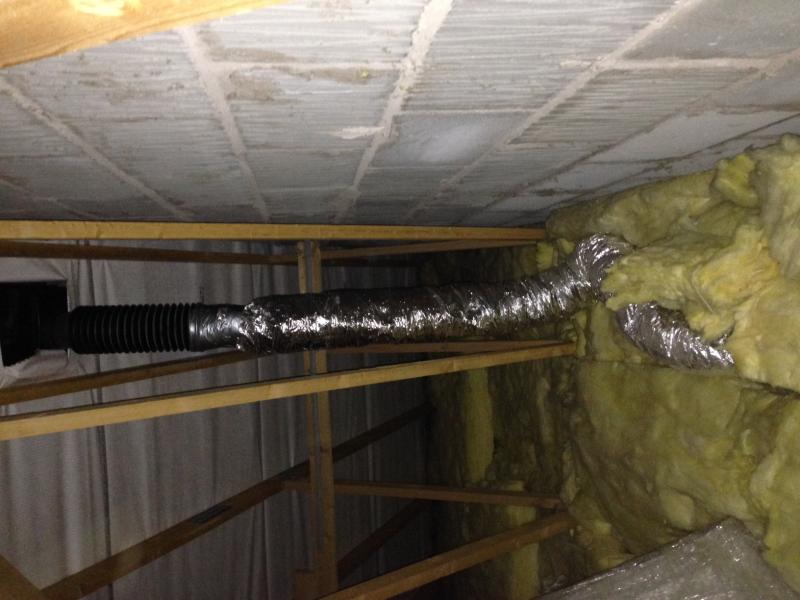Hi guys,
Long time lurker, first time poster!
I think this is the right board to post this in as it's related to electricals.
I moved into a 5 year old house in July and the fan in the en-suite has been fine until this week when water started dripping out and it created a water mark around it.
Having been up in the loft to inspect, I found the setup shown.
As you can see, the ducting goes horizontal immediately after the fan and then vertical to a tile vent.
The horizontal part appears to be pooling quite a bit of water which seems like it's corroding the ducting and so it's within the insulation.
Therefore I'm keen to replace it all and hopefully stop this happening again.
Was the issue one of the below or a combination of them all?
1) Slack within the ducting leaving it vulnerable to condensation collecting.
2) The horizontal section sloping toward the fan as opposed to away from it?
If so, what's the best way to avoid this rehappening when I redo it?
-I read that I should use rigid piping as opposed to flexible ducting, would that make a difference?
-Should I tilt the horizontal section away from the fan as opposed to towards it to prevent condensation from flowing back out of the fan?
Based on the above, a 90 degree elbow straight from the fan into a slightly downward slope and then another 90 degree into a vertical to the vent?
Any advice appreciated as this is the first time I've ever needed to fit ducting.
(Can anyone point me at the best materials to use/where to get it from?)
Edit - Sorry, seems to not want to let me post the image the correct way but hopefully it makes sense!
Long time lurker, first time poster!
I think this is the right board to post this in as it's related to electricals.
I moved into a 5 year old house in July and the fan in the en-suite has been fine until this week when water started dripping out and it created a water mark around it.
Having been up in the loft to inspect, I found the setup shown.
As you can see, the ducting goes horizontal immediately after the fan and then vertical to a tile vent.
The horizontal part appears to be pooling quite a bit of water which seems like it's corroding the ducting and so it's within the insulation.
Therefore I'm keen to replace it all and hopefully stop this happening again.
Was the issue one of the below or a combination of them all?
1) Slack within the ducting leaving it vulnerable to condensation collecting.
2) The horizontal section sloping toward the fan as opposed to away from it?
If so, what's the best way to avoid this rehappening when I redo it?
-I read that I should use rigid piping as opposed to flexible ducting, would that make a difference?
-Should I tilt the horizontal section away from the fan as opposed to towards it to prevent condensation from flowing back out of the fan?
Based on the above, a 90 degree elbow straight from the fan into a slightly downward slope and then another 90 degree into a vertical to the vent?
Any advice appreciated as this is the first time I've ever needed to fit ducting.
(Can anyone point me at the best materials to use/where to get it from?)
Edit - Sorry, seems to not want to let me post the image the correct way but hopefully it makes sense!



